Matcha
Introduction
Matcha is a type of powdered green tea that originated in China during the Tang Dynasty and later became popular in Japan. It is traditionally used in the Japanese tea ceremony, known as the Way of Tea. The tea leaves used to make matcha are grown in the shade, which increases their chlorophyll content and gives the tea its vibrant green color[1].

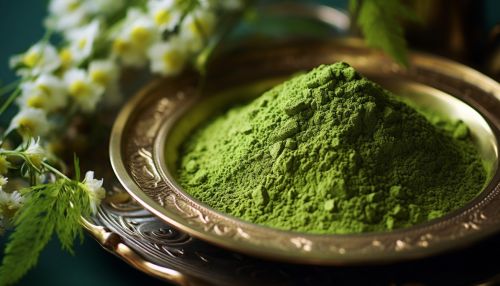
History
The practice of grinding tea leaves into a powder began in China during the Tang Dynasty (618-907). The tea was prepared by forming the powder into bricks, which were then broken off and mixed with water. This method of tea preparation was later brought to Japan by Buddhist monks, where it evolved into the matcha we know today[2].
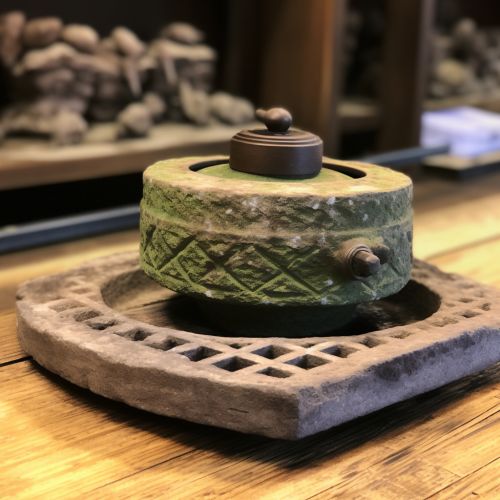

Production
The production of matcha involves several steps, each of which contributes to the tea's unique flavor and health benefits. The tea plants are shaded for about three weeks before harvest, which increases the chlorophyll content and gives the tea its characteristic green color. The leaves are then hand-picked, steamed to prevent oxidation, dried, and finally ground into a fine powder[3].

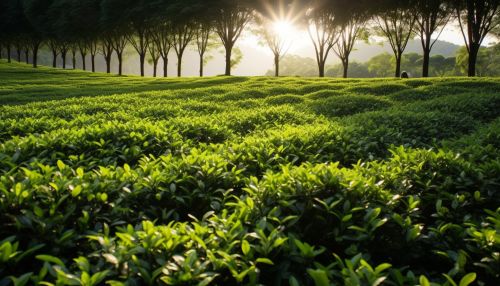
Health Benefits
Matcha is rich in antioxidants, particularly catechins, which are believed to have cancer-fighting effects on the body. It also contains a unique type of catechin called EGCG (epigallocatechin gallate), which is known for its potential to boost metabolism and slow or halt the growth of cancer cells[4]. Matcha also contains a small amount of caffeine and an amino acid called L-theanine, which can have a calming effect on the brain[5].

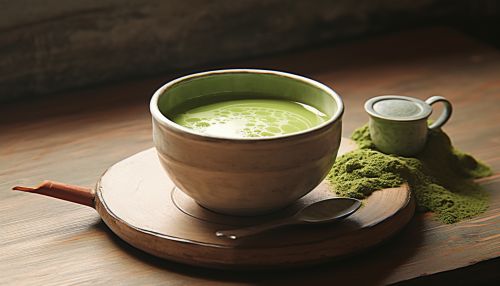
Preparation and Use
Matcha is traditionally prepared by sifting the powder into a bowl, adding hot (not boiling) water, and whisking it until it becomes frothy. The result is a rich, creamy tea that is typically served in a bowl rather than a cup. In addition to its use in the tea ceremony, matcha is also used as a flavoring in foods such as mochi and soba noodles, as well as in various types of confectionery and ice cream[6].
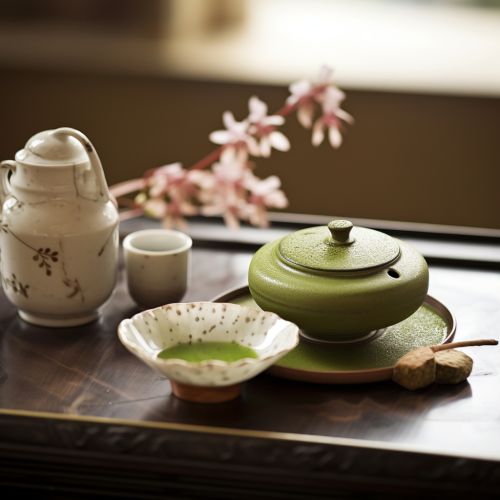
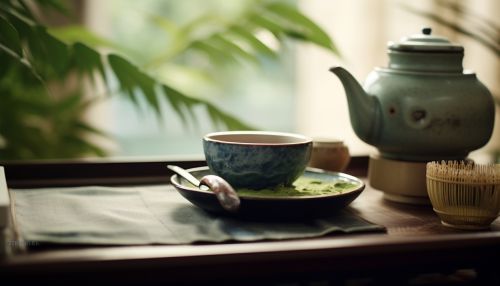
Cultural Significance
In Japan, matcha is more than just a type of tea; it is a part of the country's cultural heritage. The Japanese tea ceremony, or Chanoyu, is a ritualized preparation and presentation of matcha. This ceremony is a form of meditation and a demonstration of hospitality, respect, and aesthetic appreciation[7].
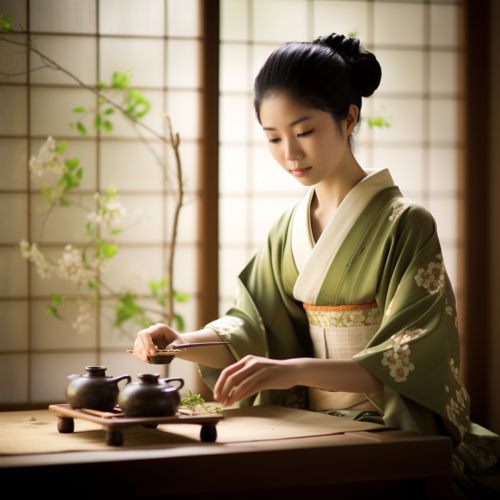

See Also
References
- ↑ https://www.ncbi.nlm.nih.gov/pmc/articles/PMC5557534/
- ↑ https://www.sciencedirect.com/science/article/pii/S2352618115000081
- ↑ https://www.ncbi.nlm.nih.gov/pmc/articles/PMC5557534/
- ↑ https://www.ncbi.nlm.nih.gov/pmc/articles/PMC2855614/
- ↑ https://www.ncbi.nlm.nih.gov/pmc/articles/PMC4728665/
- ↑ https://www.sciencedirect.com/science/article/pii/S2352618115000081
- ↑ https://www.jstor.org/stable/1178181
